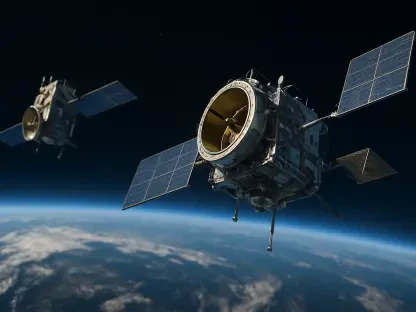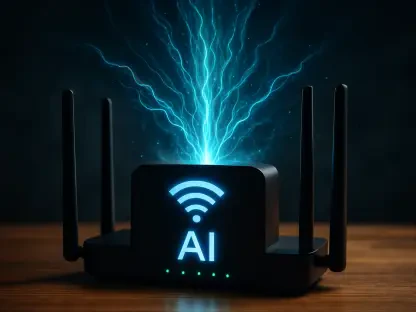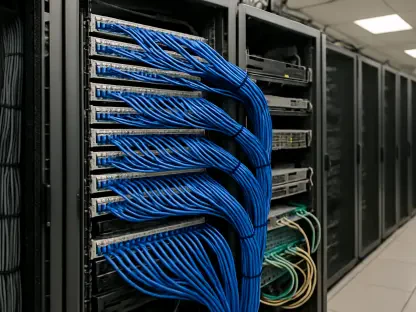The Ambient IoT Alliance (AIoTA) has been established by leading industry players such as Atmosic, Infineon Technologies AG, Intel, PepsiCo, Qualcomm, VusionGroup, and Wiliot. This consortium is dedicated to fostering a comprehensive global Internet of Things (IoT) ecosystem, focusing on next-generation, battery-free ambient IoT standards including Wi-Fi, Bluetooth, and 5G. The alliance’s mission is to create and promote an open, harmonized, and multi-standard ecosystem that supports ambient IoT solutions, ensuring interoperability and best practices among its members.
Transformative Evolution in IoT Technology
Battery-Free Interconnected Devices
Ambient IoT represents a significant evolution in IoT technology, focusing on interconnecting everyday objects without the need for batteries. This is achieved by leveraging standard wireless radios found in smart devices, appliances, and wireless access points. These IoT-enabled devices can detect various environmental factors such as location, temperature, and humidity, and then communicate that data to wireless infrastructures. The concept of ambient IoT transforms traditional IoT devices into autonomous, energy-efficient sensors that can operate indefinitely without the constraints of battery life.
The ability to interconnect devices in a battery-free manner offers numerous advancements in efficiency and sustainability. By eliminating the need for batteries, these devices can significantly reduce electronic waste and lower maintenance costs associated with battery replacements. Furthermore, the integration of ambient IoT technologies into existing wireless infrastructures ensures a seamless flow of data, providing real-time insights and enhanced visibility into various operations. This paradigm shift is particularly beneficial for industries that require extensive monitoring and tracking, as it enables continuous data collection without the logistical challenges of managing power sources.
Large-Scale Deployment and Integration
The integration of ambient IoT is envisioned to facilitate large-scale deployments across diverse sectors like supply chains, retail, and healthcare. By effectively bridging the physical and digital worlds, ambient IoT enables a seamless flow of information and enhances operational efficiency. In the supply chain sector, for example, ambient IoT can provide real-time tracking of goods, monitoring of storage conditions, and accurate inventory management. These capabilities not only improve efficiency but also reduce waste, enhance product quality, and ensure timely deliveries.
In the retail industry, ambient IoT technologies can revolutionize the shopping experience by enabling smart shelves, dynamic pricing, and automated inventory management. Retailers can gain valuable insights into consumer behavior, optimize stock levels, and personalize shopping experiences based on real-time data. In healthcare, ambient IoT can be utilized for patient monitoring, asset tracking, and ensuring the integrity of medical supplies. These applications highlight the transformative potential of ambient IoT in creating intelligent, interconnected environments that drive efficiency, sustainability, and improved outcomes across various domains.
Open and Harmonized Ecosystem
The AIoTA aims to drive the future of IoT by connecting billions of devices cost-effectively and securely. This initiative contributes to environmental sustainability through energy-efficient solutions. By promoting an open, harmonized, and multi-standard ecosystem, the AIoTA ensures that ambient IoT technologies are accessible and interoperable. Such an ecosystem fosters innovation, drives adoption, and enables seamless integration across various platforms and applications. The commitment to interoperability and best practices among member companies ensures that the solutions developed are scalable, secure, and future-proof.
Dr. Kamesh Medapalli of Infineon Technologies highlights that ambient IoT aligns with Infineon’s strategic focus on digitalization and decarbonization. This alignment emphasizes the potential of ambient IoT to innovate and connect numerous IoT devices while conserving resources and reducing environmental impact. The promotion of energy-efficient solutions is a key driver for sustainable IoT adoption, and the AIoTA’s efforts play a crucial role in realizing this vision. By leveraging ambient IoT technologies, businesses can achieve greater operational efficiency, reduce costs, and contribute to global sustainability efforts.
Symbiotic Relationship with AI
The symbiotic relationship between ambient IoT and artificial intelligence (AI) is another notable trend. Ambient IoT generates vast amounts of data, enhancing AI applications and providing businesses and consumers with deeper insights into their environment. The data collected from ambient IoT devices can be harnessed to train and refine AI algorithms, resulting in more accurate predictions, optimized processes, and improved decision-making. This data-driven approach promises significant returns on investment by optimizing resource utilization, streamlining operations, and enhancing customer experiences.
AI-enabled ambient IoT solutions can revolutionize various industries by delivering personalized and context-aware services. For instance, in smart cities, AI can analyze data from ambient IoT sensors to optimize traffic flow, reduce energy consumption, and enhance public safety. In industrial settings, AI can predict equipment failures, optimize maintenance schedules, and improve production efficiencies. The combination of ambient IoT and AI empowers organizations to harness the full potential of their data, driving innovation and creating value in ways previously unimaginable.
Collaborative Environment and Standards
Fostering Collaboration
The AIoTA is not just about establishing standards but also about fostering a collaborative environment among companies involved in producing or utilizing IoT tags, devices, networking middleware, applications, and cloud services. The formation of the Ambient IoT Alliance brings together industry leaders who share a common vision of creating a unified and interconnected IoT ecosystem. Collaborative efforts among these companies are essential for developing interoperable solutions, driving innovation, and accelerating the adoption of ambient IoT technologies.
Wiliot CTO Alon Yehezkely emphasizes the transformative potential of ambient IoT and the satisfaction derived from collaborating with like-minded entities within the Alliance. Such collaboration ensures that the solutions developed are robust, scalable, and aligned with industry standards. The AIoTA’s focus on fostering a collaborative environment creates a platform for knowledge sharing, joint development, and mutual support, ultimately driving the growth and success of ambient IoT technologies on a global scale.
Expansion of Ecosystem
As ambient IoT technologies become part of global communication standards—being developed by industry bodies like the IEEE for Wi-Fi, Bluetooth SIG, and 3GPP for 5G Advanced—the AIoTA anticipates an expansion of its ecosystem. This growth will potentially encompass businesses, telecommunications companies, and technology vendors aligned with these standards. The integration of ambient IoT into established communication standards ensures widespread compatibility, enabling seamless interoperability and fostering industry-wide adoption.
David Su of Atmosic highlights that ambient IoT is essential for sustainable IoT adoption, advocating for wireless tracking solutions that either minimize power use or harvest energy, ensuring continuous connectivity and operational efficiency for companies. The ability to operate IoT devices without the constraints of battery life is a key enabler for scalable and sustainable IoT implementations. The expansion of the AIoTA ecosystem will drive further innovation, create new business opportunities, and establish ambient IoT as a cornerstone of the next-generation IoT landscape.
Vision for Ambient IoT
Unified Efforts for Impact
The AIoTA’s vision is for ambient IoT to achieve its full potential and impact all industries. For this to happen, it emphasizes the necessity of a coalition of companies and products working in unison. The insights derived from ambient IoT technologies could revolutionize business operations, driven by the data and analytics that this interconnected system can provide. The collaborative efforts within the AIoTA are crucial for developing comprehensive solutions that address the unique needs and challenges of various industries while ensuring interoperability and scalability.
The potential impact of ambient IoT is vast, with applications ranging from smart cities and industrial automation to healthcare and consumer electronics. Unified efforts ensure that ambient IoT technologies are not only innovative but also practical and beneficial for real-world use cases. The AIoTA’s commitment to fostering a collaborative ecosystem is key to realizing this vision, as it enables the pooling of resources, expertise, and best practices to drive the development and adoption of ambient IoT solutions.
Advocacy and Awareness
The Ambient IoT Alliance (AIoTA) has been created by prominent industry leaders, including Atmosic, Infineon Technologies AG, Intel, PepsiCo, Qualcomm, VusionGroup, and Wiliot. This coalition is dedicated to developing a robust global Internet of Things (IoT) ecosystem. It focuses on advancing next-generation, battery-free ambient IoT standards, utilizing technologies like Wi-Fi, Bluetooth, and 5G. The alliance’s primary goal is to formulate and endorse an open, coordinated, multi-standard ecosystem that promotes ambient IoT solutions. Key to their mission is ensuring interoperability and adherence to best practices among all members. By doing so, they aim to foster collaboration and innovation within the IoT space, driving the adoption of cutting-edge, energy-efficient technologies that can seamlessly operate in the background of our daily lives. This initiative targets not only improving connectivity but also harmonizing efforts to create unified standards that will benefit both industry players and end-users.









